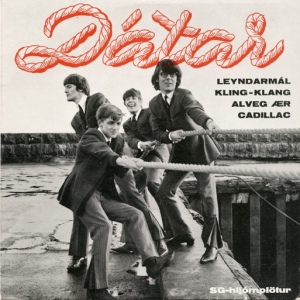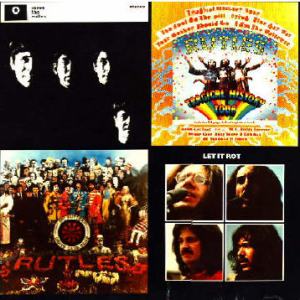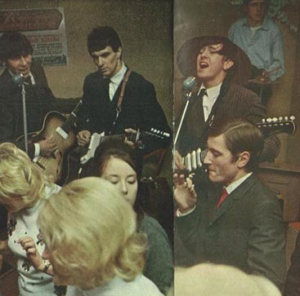After sitting through the first six tracks of the abysmal garbage that was the album Horrified by Repulsion, I have decided to review something more decent. That is the 1966 debut EP by Dátar. This band were from Iceland, and they were one of Iceland’s two clones/soundalikes of the Beatles. The second Icelandic Beatles clone being Thor’s Hammer (not to be confused with the Polish NSBM band of the same name).
In a country with no television stations at the time, Dátar gained widespread popularity in Iceland through their recordings. Sadly, throughout the band’s history, all of the members have died except for one, their bass player Jón Pétur Jónsson.
I have in no possible way a copy of this recording in my possession, but someone uploaded all of the band’s songs on YouTube, in chronological order.
The tracks:
“Leyndarmál”-This song is more in the soft rock category, like the Beatles song “Till There Was You”. This is driven by both guitar and gentle Farfisa organ.
“Alveg Ær”-This is practically the most catchy song on the EP, featuring really bouncy organ and really interesting drum work. The harmony vocals also live up to their charm in this track. The organ solo is really something special, too.
“Kling Klang”-Not to be confused with the Kraftwerk song of the same name, this track goes in a more James Bond-style secret agent music approach, with the guitars, bass and organ going towards a more awesome approach. You also hear some chiming bells that stays with the theme of the song.
“Cadillac”-The only English-sung track on the EP, this is a catchy cover of the song “Brand New Cadillac” by Vince Taylor and the Playboys. The song quickens in tempo at the end. The English vocals in this song have a tiny bit of an Icelandic drawl.
In conclusion, this is one of the best collections of Icelandic beat music recordings ever made. It’s an awesome listen, and it’s a good way to calm me down from that abysmal grindcore garbage!
To check out this, and Dátar’s second EP, check it out here: https://www.youtube.com/watch?v=fx43wBFX4_M


